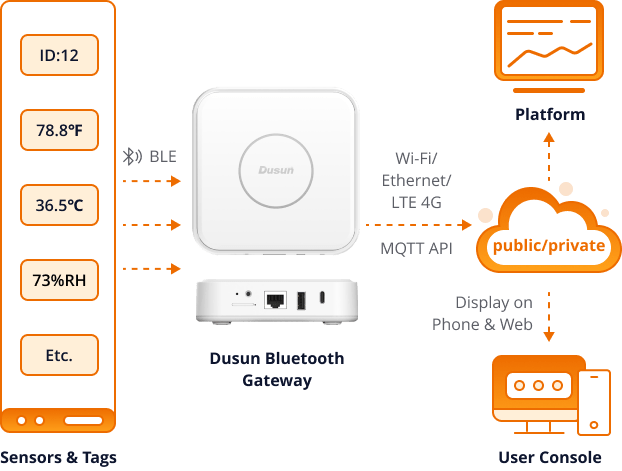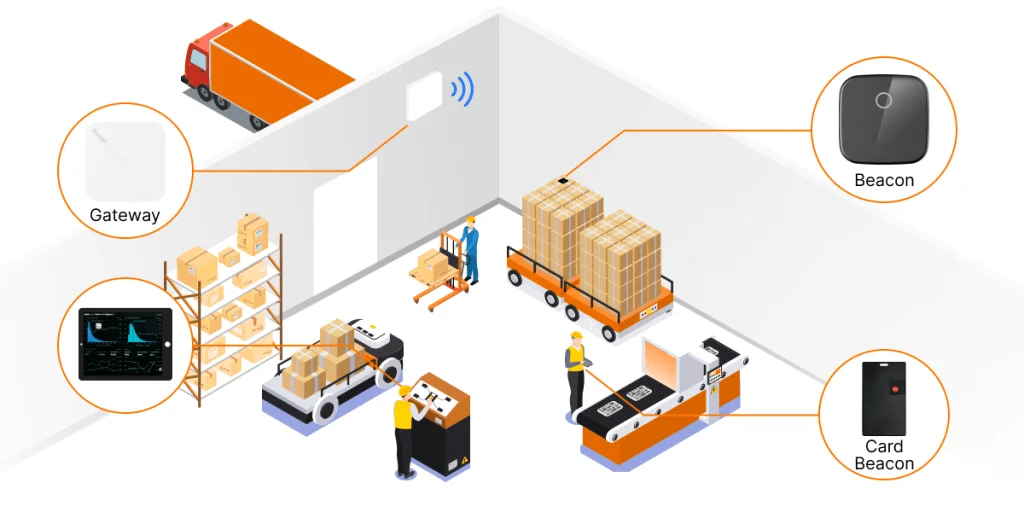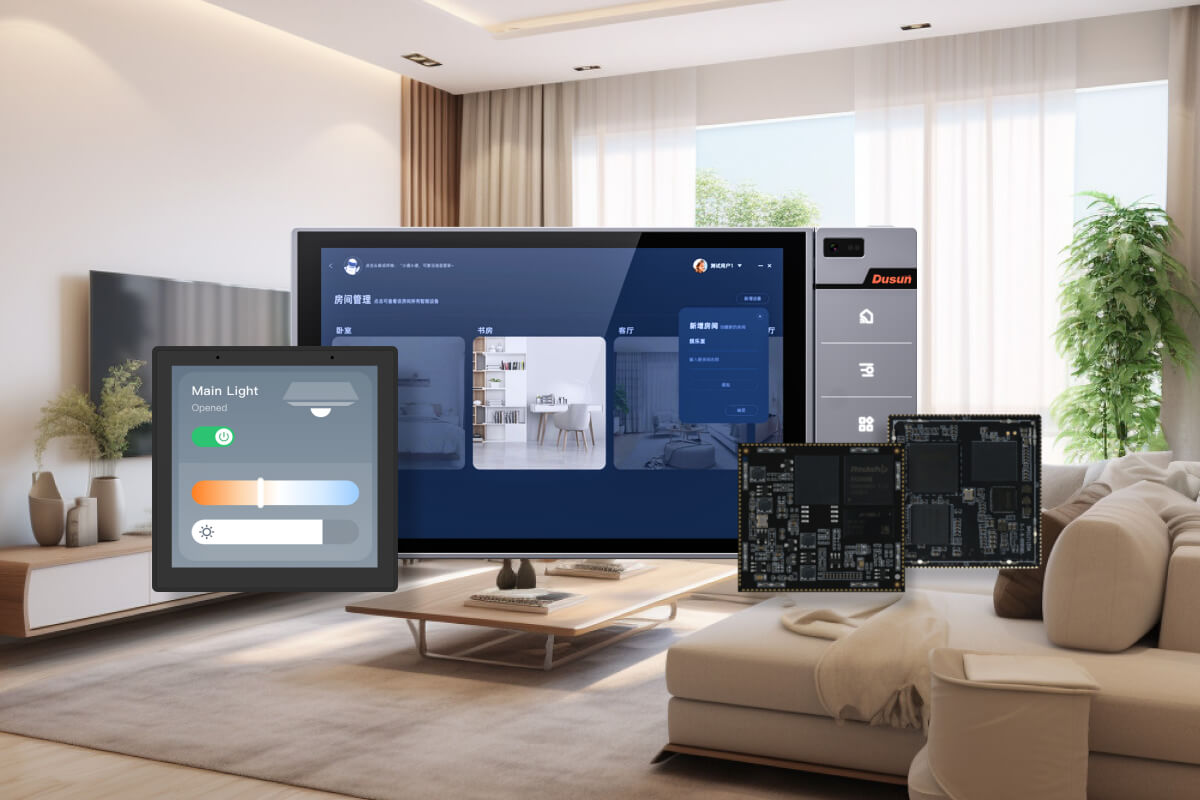Bluetooth IoT, particularly driven by the popularity of Bluetooth Low Energy (BLE), has witnessed significant growth and adoption in the IoT domain. With BLE’s low energy consumption and ability to operate on small batteries for extended periods, it has become the preferred wireless technology for many IoT applications. This article explores the role of Bluetooth Low Enrgy in IoT. It also discusses the advantages of BLE technology that make it suitable for IoT applications.

Bluetooth and Its Iterations
Bluetooth technology has evolved through different iterations, introducing new features and improvements. The initial Bluetooth version was introduced in 1999. Bluetooth Low Energy (BLE), also known as Bluetooth 4.0 or Bluetooth Smart, was invented in 2010 to minimize power consumption. This makes it ideal for IoT devices that operate on battery power, providing extended battery life. BLE is suitable for devices requiring periodic data exchanges and is widely adopted in consumer electronics and automotive industries.
You may also be interested in different Bluetooth version comparison
Bluetooth Classic vs Bluetooth Low Energy in IoT Projects
Bluetooth Classic suits applications requiring higher data transfer rates, continuous communication, and voice capabilities. On the other hand, BLE is optimized for low-power IoT devices, with short bursts of communication and small data transfers. The following table shows a comparative analysis of both technologies that will help to understand why BLE is so popular in IoT applications.
| Feature | Bluetooth Classic | Bluetooth Low Energy (BLE) |
| Frequency Range | 2.402GHz to 2.48GHz | 2.402GHz to 2.48GHz |
| Range | Up to 100 meters | Up to 100 meters |
| Data Transfer Rate | 1-3 Mbps | 125 Kbps – 2 Mbps |
| Communication Mode | Continuous | Short bursts |
| Power Consumption | Higher | Lower |
| Voice & Large File Transfer | Yes | No |
| Latency | Up to 100ms | 6ms |
| Power Usage | 1 Watt | 0.01 to 0.5 Watts |
| Bidirectional Communication | Yes | Yes |
| Unidirectional Communication | No | Yes |
| Indoor Location Tracking | Limited accuracy | Yes |
| Asset Management | Limited tracking capabilities | Yes |
| PC Peripherals Support | Yes | Limited support |
| Security | AES-128 encryption | AES-128 encryption |
Why is BLE so Popular in IoT World?
BLE utilizes the same radio wavebands as Bluetooth and similarly enables data exchange between two devices. The key difference is that the BLE devices spend most of their time in sleep mode between connections and engage in brief communication sessions. In contrast, “Classic Bluetooth” is designed to remain continuously active for prolonged hours of communication. Hence, a BLE device can operate on a single coin-cell battery for a year.
BLE’s features making is ideal for IoT applications are listed below.
- BLE is designed to be resource-efficient and well-suited for devices with limited power, processing capabilities, and memory.
- BLE periodically transmits small data packets efficiently.
- BLE connections have a latency of 6ms, making them suitable to support sleep and wake-up modes. A higher latency would result in losing crucial information as it would take longer to establish the connection.
Bluetooth Low Energy in IoT, How It Works?
Bluetooth Low Energy (BLE) works in IoT applications through various modes of operation:
Data Transfer in Single Direction: BLE is commonly utilized in Bluetooth IoT applications for unidirectional data transfer, where sensor devices broadcast data periodically to a gateway or receiver connected to the cloud.
Remote Control and Operation: The gateway controls BLE IoT sensors/actuators for Bluetooth IoT applications in BLE bidirectional communication, thus enabling remote control and operation.
BLE Mesh Networking: BLE supports mesh networking, where multiple BLE IoT devices form a network with the gateway acting as the controller. This allows for remote monitoring and control of the entire BLE mesh network, enabling scalability and coordination between nodes in larger Bluetooth IoT deployments.
Bluetooth IoT Devices
Several Bluetooth IoT devices are used to create an IoT network. Bluetooth IoT sensors and gateways collaborate to collect data from the surrounding environment and transmit it to the cloud through connectivity options like WiFi, LTE 4G, or Ethernet. This integration of BLE enables efficient and effective data acquisition, facilitating the advancement of IoT technology. The following sections discuss a few critical components of a BLE IoT network.
Architecture of Bluetooth IoT
The architecture of Bluetooth IoT typically involves a hierarchical structure that includes the following components:
- Bluetooth IoT Devices: These end devices have Bluetooth connectivity and various smart sensors or beacons. They collect data from the surrounding environment or interact with other devices within the BLE IoT network.
- IoT Gateways: BLE Gateways receive data from Bluetooth IoT devices and transmit it to the cloud after preprocessing.
- Central IoT Network: The cloud-based or on-premises infrastructure manages the processing, storage, and analysis of data received from Bluetooth IoT devices.
BLE Sensors/Beacons
Bluetooth IoT devices often incorporate various sensors or beacons to collect data from the physical environment. These sensors can include:
- Environmental Sensors: Temperature, humidity, pressure, and ambient light sensors commonly monitor environmental conditions.
- Motion and Proximity Sensors: Accelerometers, gyroscopes, magnetometers, and proximity sensors detect motion, orientation, and proximity of objects or individuals.
- Health and Fitness Sensors: Bluetooth IoT devices for health and fitness tracking, such as heart rate monitors, pulse oximeters, and activity trackers, transmit data to smartphones or other devices.
- Asset Tracking Beacons: Bluetooth beacons equipped with location-tracking capabilities can monitor the movement and location of assets within a defined area.
Bluetooth IoT Gateways
The gateways in Bluetooth IoT deployments provide protocol translation, data preprocessing, connectivity management, and local processing/control functions. They enable communication between Bluetooth IoT devices and the central IoT network, ensuring compatibility, efficiency, security, and localized decision-making capabilities.
Bluetooth Low Energy IoT Use Cases
The use of Bluetooth low energy in IoT applications is extensive. Following are some popular use cases:
Smart Homes
BLE mesh technology is highly used in smart home applications. It connects and controls various smart devices such as lights, thermostats, door locks, and security systems. Bluetooth gateways and BLE mesh efficiently communicate and manage multiple BLE IoT devices within the smart home ecosystem.
Industrial monitoring
BLE enables real-time monitoring of equipment conditions, predictive maintenance, asset tracking, environmental monitoring, energy monitoring, worker safety, and data collection and analytics. BLE sensors and beacons transmit data wirelessly to a central system, allowing for efficient and cost-effective monitoring of various parameters.
Home Wearables
Wearable devices like ECG (Electrocardiogram) and CGM (Continuous Glucose Monitoring) use Bluetooth low energy in IoT applications. BLE IoT provides secure and low-power data transmission between the wearable sensor and a mobile device or cloud platform. It enables continuous monitoring of vital signs and health parameters.

Indoor positioning
BLE beacons and receivers help to achieve precise indoor positioning and navigation. This technology is used in various situations, such as retail stores, museums, hospitals, airports, and warehouses, enabling location-based services, wayfinding, and asset tracking within indoor environments.

FAQs of Bluetooth IoT
Is Bluetooth a technology commonly used in IoT?
Yes, Bluetooth is a fundamental technology within the IoT ecosystem, enabling wireless communication and data exchange between nearby devices.
How Bluetooth and Wi-Fi are different in IoT?
Bluetooth is devised for short-range communication between nearby devices. Wi-Fi provides broader coverage and higher data transfer rates over longer distances. It is more fitting for linking devices across larger areas or networks.
How to choose Bluetooth IoT solutions?
Consider multiple factors while choosing a Bluetooth IoT solution, such as the specific use case requirements (e.g., direction-finding or lighting control) and the Bluetooth Low Energy (BLE) System-on-Chip (SoC) capabilities. Also, see the power consumption efficiency, support for BLE mesh networking, availability of rich interfaces, compatibility with existing infrastructure, and scalability to meet future needs.



















